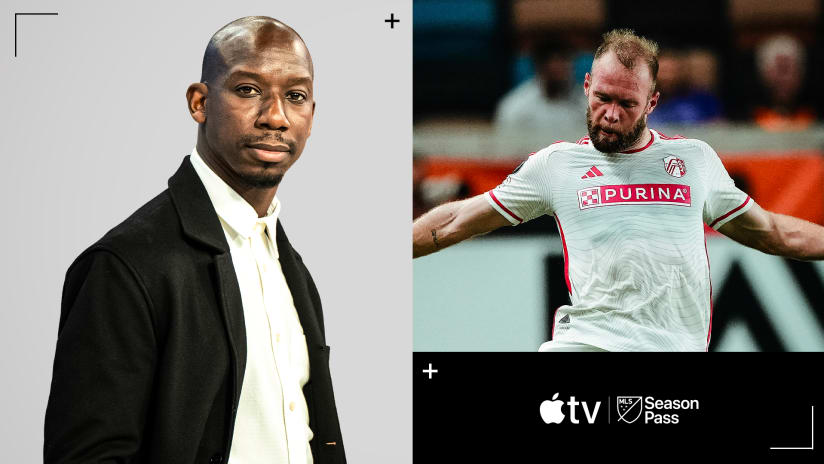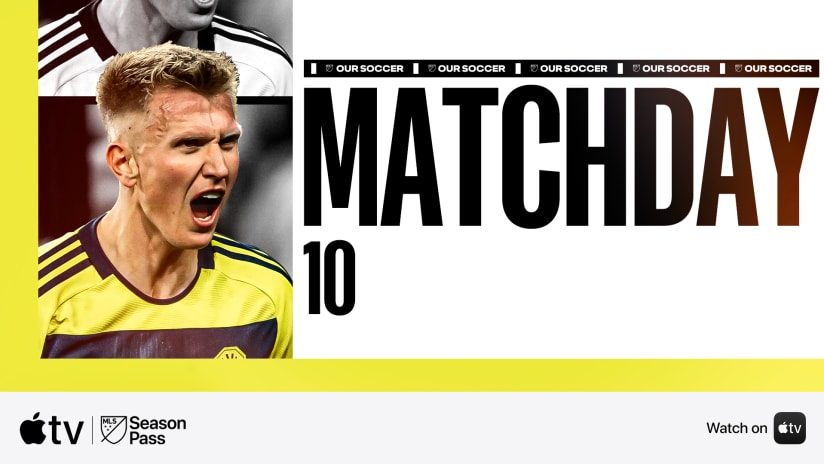As thankless jobs go in soccer, “lone striker” may just take the tactical cake.
Whether the team setup is a 4-5-1, a 4-1-4-1 or some variation that leaves the frontrunner slightly less stranded, he’s on an island up there, isolated, without much nearby support. If you don’t believe it, just watch how many times a solitary figure assigned to such a role wanders and struggles with little impact.
But every now and then a lone striker shows us how it’s done. Justin Braun had that kind of night for Chivas USA over the weekend against Houston.
Braun struck for his second hat trick of the year. That’s a monster achievement for the young striker who always seems to brim with potential — but who just hasn’t nailed the consistency required to assume the next level.
WATCH: Braun finishes his hat trick
alt="Get Microsoft Silverlight" border="0" src="http://go.microsoft.com/fwlink/?LinkId=108181" ckesavedsrc="http://go.microsoft.com/fwlink/?LinkId=108181" ckesavedsrc="http://go.microsoft.com/fwlink/?LinkId=108181" ckesavedsrc="http://go.microsoft.com/fwlink/?LinkId=108181" />
It wasn’t just Braun’s goals in the 3-0 Dynamo dispatching that illuminated his night, although three strikes will always draw the headlines. His night was a blueprint for how to make a system work when the top third is, essentially, one against four — hardly a fair fight by any measure. Frequently isolated, this lone wolf is frequently marked by two or even three defenders.
So, three elements are critical in this unbalanced fight: tireless running, studied timing in his movement and ruthless efficiency near goal. So, check, check and check, please!
We’ll take these one by one:
Defensively, a lone striker must prudently pick his spots. He simply cannot chase the ball across 70 yards of width, a fool’s errand that would quickly exhaust even the fittest, strongest warrior athlete.
Instead, the lone striker wants to guide opposition possession to one side, hoping to bait the trap in coordination with one or two of his midfielders. At the right moment, he squeezes the play into a little corner of two- or three-man pressure, hoping for a turnover that will spring the counter going the other way. This way he won’t exhaust himself too early — although he’ll still make those legs burn.
Second, when his team has possession, a lone striker can turn this numerical disadvantage in his favor through cunning and through precisely timed movement. When he isn’t checking back toward the play to act as a target presence, he wants to drift actively between the two center backs, hoping to create little moments of indecision of miscommunication on which center back will mark and which will support.
Even when he isn’t about to receive possession, the lone striker plays a critical role while his team has the ball. He must have the discipline to remain high up the field, and central. That keeps one or two central defenders occupied, and even keeps the fullbacks on alert. Straying out too wide may feed the instinct for individual variation — we’ve seen that recently elsewhere in MLS — but it’s not best for the team.
Braun maintained the discipline all night, remaining near the middle until the right moment. At that time, a lone striker hopes to create yawning gaps by dragging his marker into wider areas nearer the touchline. More on this in a minute.
WATCH: Braun opens his evening
alt="Get Microsoft Silverlight" border="0" src="http://go.microsoft.com/fwlink/?LinkId=108181" ckesavedsrc="http://go.microsoft.com/fwlink/?LinkId=108181" ckesavedsrc="http://go.microsoft.com/fwlink/?LinkId=108181" ckesavedsrc="http://go.microsoft.com/fwlink/?LinkId=108181" ckesavedsrc="http://go.microsoft.com/fwlink/?LinkId=108181" ckesavedsrc="http://go.microsoft.com/fwlink/?LinkId=108181" />
(On the other end, Houston’s center backs didn’t always maintain their own discipline. Watch the first goal as Jermaine Taylor gets dragged out of position, venturing out to help his right back rather than trusting his young fullback to deal with the problem one-on-one. With Taylor removed from the play, Braun recognizes the begging opportunity to cut across his marker, Andre Hainault, and knocks in the opening goal.)
Third, as for the ruthless efficiency, how’s this: All three of Braun’s goals were first touches. That means his runs toward goal were precise and launched with authority. His third on Saturday represents a perfect example. As teammate Ante Jazic corrals a well-weighted pass along the left, Braun’s hard run takes him away from Houston’s Taylor, who is struggling to keep up. So Braun is unchallenged at the far post as Jazic’s pinpoint, centering pass comes zipping through.
Obviously, Braun isn’t doing it all himself. For another reason the lone striker worked seamlessly Saturday, look to the form of Nick LaBrocca, one the breakout revelations of MLS 2011 (who is getting All-Star love this week to prove it). In Chivas’ 4-1-4-1 set-up Saturday, LaBrocca played alongside Blair Gavin, just ahead of Simon Elliott. All three wore the roles well, with Elliott acting as a ball-winner and rapid distributor to the pair in front of him.
But LaBrocca was particularly effective at working in tandem with Braun; when the lone striker made those critical runs into wide areas, or made those checking runs toward midfield, the tracking center back often left a gaping hole behind him. LaBrocca was always looking to exploit and fill that vulnerable hole.
Houston had more possession in the contest, but due to the tactical edges of a lone striker who was on his game, Chivas USA had far more chances — and a showy result by the end.











